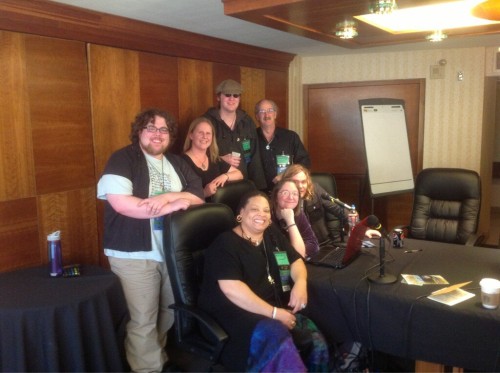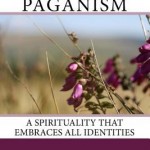This year at PantheaCon, I was pleased to moderate a panel on “Pagan Intrafaith,” discussing how interfaith models might benefit the Pagan community if applied internally. If you’d like to listen to the audio, proceed! Or, scroll down to see the list of presenters and the text of my opening remarks.
Pagan Intrafaith
Patheos Pagan Writers
Panel Presentation, PantheaCon 2013
February 15, 2013 – San Jose, California

Moderator: Christine Hoff Kraemer
Participants: Eric Scott, Sarah Twichell, Crystal Blanton, Jason Mankey, P. Sufenas Virius Lupus, Steven Abell
Introduction
Thank you all for coming to this panel on Pagan Intrafaith. I’m Christine Kraemer, managing editor of the Patheos Pagan channel, and I’m excited that I’ve been able to gather some of our most thoughtful writers for this discussion.
Before we begin, I’d like to address the question of what “intrafaith” work might be for Pagans. Many of you are familiar with the concept of interfaith work, which involves dialogue between different religious traditions. Interfaith work assumes the following:
First, that diversity is actively desirable. Interfaith work isn’t about tolerating each other, it’s about interacting with and learning from each other for mutual benefit.
Second, that when we are ignorant of other faiths, the assumptions and stereotyped thinking lead to unnecessary conflict. Interfaith work is thought to be a necessary part of peacebuilding and coalition building.
Third, that interfaith work is NOT about assimilation or abandoning our own religious commitments. Ideally, encountering other faiths should help us understand and commit more deeply to our own religions.
And finally, that the core of interfaith work is based on genuine dialogue, which consists of both speaking and listening, agreeing and disagreeing. The purpose is not for everyone in dialogue to resolve their differences, but rather to act on an ongoing commitment to understand those differences.
Interfaith dialogue makes it much more possible for diverse groups to work together on issues they care about. For instance, the Hindu American Foundation has sent representatives to PantheaCon for the past two years: they’re interested in lobbying for minority religious rights, and so are many Pagans. While there are some important differences between Paganism and Hinduism, and some issues on which we will probably never agree, minority religious rights are one area in which we can stand together and protect each other.
This panel proposes that the same kind of work could be done WITHIN Paganism. Paganism is an extremely diverse movement, more of an umbrella for a collection of loosely related religions than a single religion. It seems the more we try to pin down what “Paganism” is, the more tension we create in our communities as people worry about where the lines of inclusion and exclusion will be drawn.
Many of our communities also experience tension around accidental exclusion. So far, many of our groups don’t do a good job about setting newcomers’ expectations around what they’re about. It’s possible for a Pagan to show up at a public Pagan circle expecting a Goddess- and nature-oriented ritual, only to be entirely thrown when the ritual focuses on urban-oriented gods. Paganism has very different threads, and it’s hard to find our commonalities if we don’t have a vocabulary to talk about – and APPRECIATE – our differences.
I’m in favor of a “big tent” definition of Paganism that is inclusive and welcoming – but if Paganism is going to survive as a diverse movement, we need to improve communication between different traditions and paths. I know that meeting Pagans with radically different beliefs and practices has helped me a great deal in developing my own, and I want my community to continue to be a place where that kind of inter-tradition communication can happen.
One additional note: one participant raised the question of how “diversity” is defined versus “pluralism,” and I’m not sure we ever gave a completely clear definition. Here are mine:
Diversity is the fact of having variety, such as a group containing people of many different religious paths or ethnic backgrounds.
Pluralism is a social state where groups of different ethnic origins, religions, cultures/subcultures, etc. maintain their separate identities. A weak pluralism is one where diversity is tolerated. A strong pluralism is one where diversity is celebrated and positive relationships between groups are cultivated.
Both “diversity” and “pluralism” have come to have connotations of deliberately nurturing a pluralistic social state, but I think that connotation may be relatively new, beginning in the twentieth century. Would love to hear from anyone who knows for sure.
[Many thanks to those who participated in the discussion, including Peter Dybing, Jason Pitzl-Waters, Teo Bishop, and Glenn Turner — and apologies to those participants whose names I did not know.]















